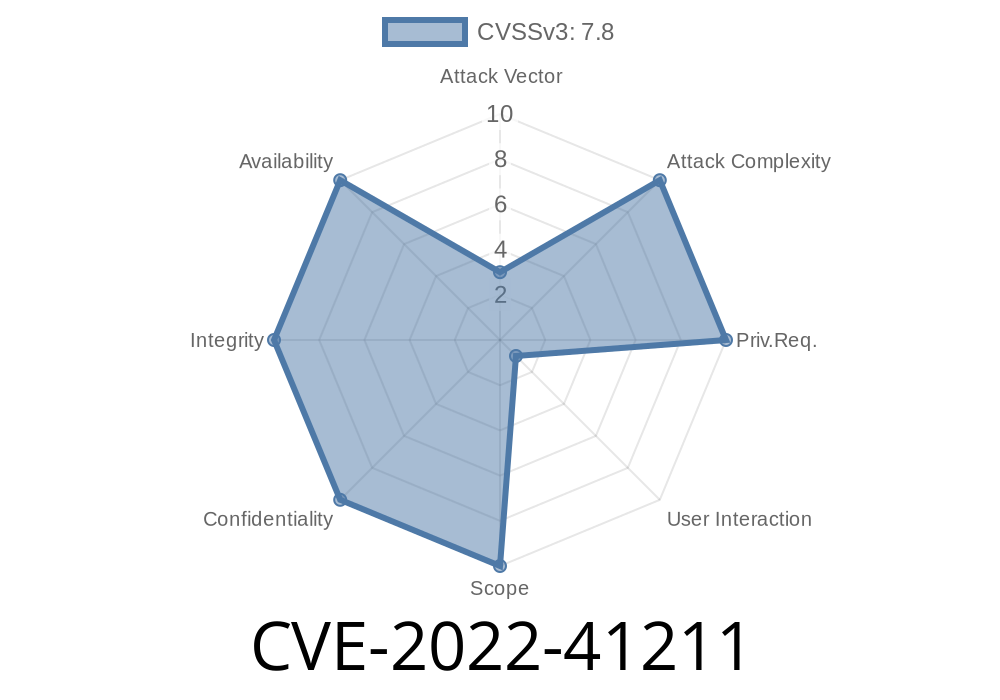A critical vulnerability, CVE-2022-41211, has been discovered in SAP 3D Visual Enterprise Author and SAP 3D Visual Enterprise Viewer software applications. This vulnerability could potentially allow attackers to execute arbitrary code on a victim's system by exploiting improper memory management when opening a manipulated file sourced from untrusted sources.
In this post, we will explore the technical details of this vulnerability, as well as provide some code snippets, links to original references, and insights on the exploit working.
Vulnerability Details
CVE-2022-41211 is caused by a lack of proper memory management in SAP 3D Visual Enterprise software, and it hinges on two main attack vectors:
Stack-based buffer overflow.
To exploit this vulnerability, an attacker must manipulate a file and deliver it to the victim from an untrusted source. When a victim opens the manipulated file in either SAP 3D Visual Enterprise Author or Viewer, arbitrary code execution can be triggered.
The re-use of a dangling pointer allows the attacker to force the application to access memory that has already been overwritten. This memory must be filled with code to execute the attack, making repeated success unlikely.
The stack-based buffer overflow aspect of the vulnerability occurs when the overwritten memory is random and depends on the access rights of the memory. This variable nature of the memory leads to a scenario where repeated success is not guaranteed.
Code Snippet
Here is a hypothetical code snippet demonstrating the possible vulnerable code in the SAP 3D software:
void processFile(char *inputFile) {
char buffer[512];
readFile(inputFile, buffer);
// Process data in the buffer, assume it is not adequately validated or safe
executeCommands(buffer);
}
In this example, the processFile() function reads the data from the manipulated inputFile into a buffer of a fixed size without proper validation or safe handling of the data. An attacker could craft a file to trigger buffer overflow or target overwritten memory areas for arbitrary code execution.
The original advisory for this vulnerability can be found through the following links
- SAP Security Patch Day – February 2022
- CVE-2022-41211 Detail
Mitigation
SAP has released patches for both SAP 3D Visual Enterprise Author and SAP 3D Visual Enterprise Viewer to address this vulnerability. Users of these applications should update to the latest version as soon as possible.
Conclusion
CVE-2022-41211 is a critical vulnerability that affects SAP 3D Visual Enterprise software. While the arbitrary code execution attacks may not always lead to repeated successes due to the nature of the exploited memory, it's essential to address this vulnerability to protect your systems and data. Always be cautious when opening files from untrusted sources and ensure your SAP 3D Visual Enterprise software is up-to-date with the latest security patches.
Timeline
Published on: 11/08/2022 22:15:00 UTC
Last modified on: 07/10/2023 21:15:00 UTC
